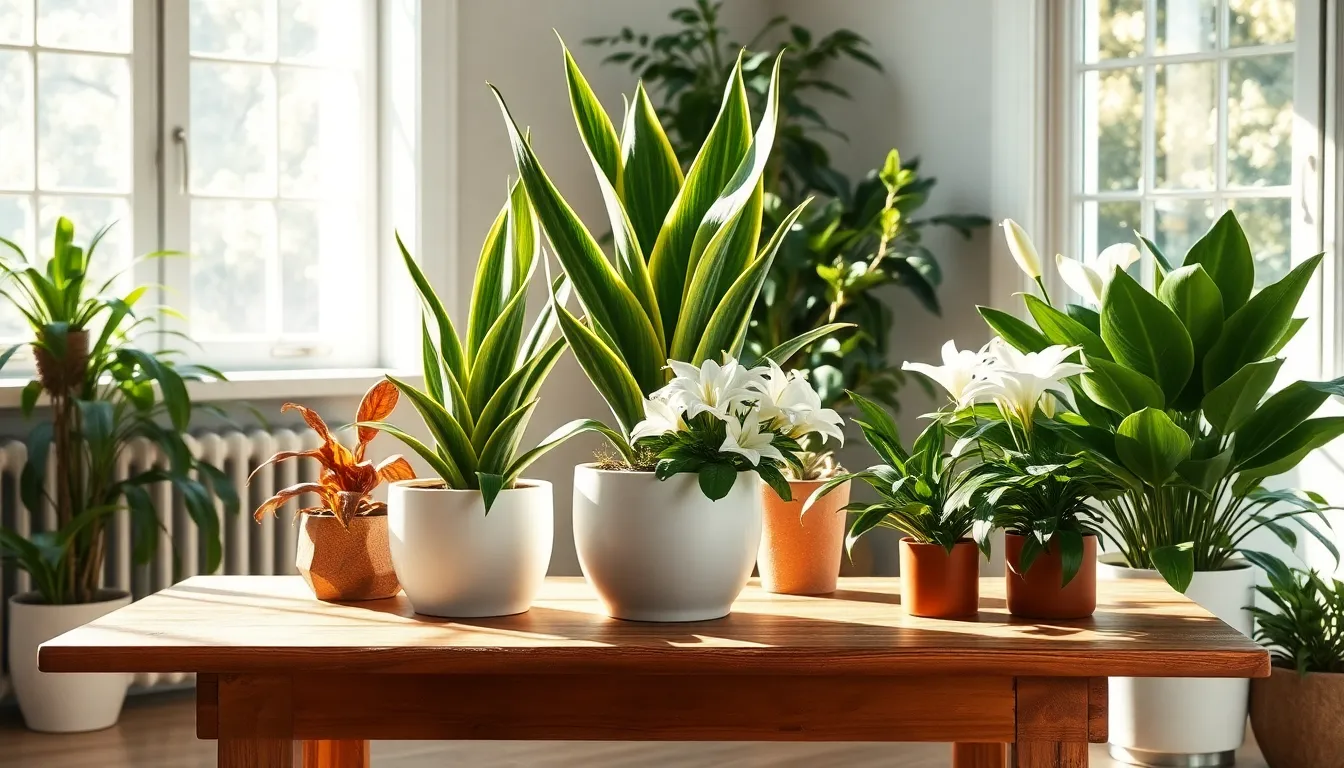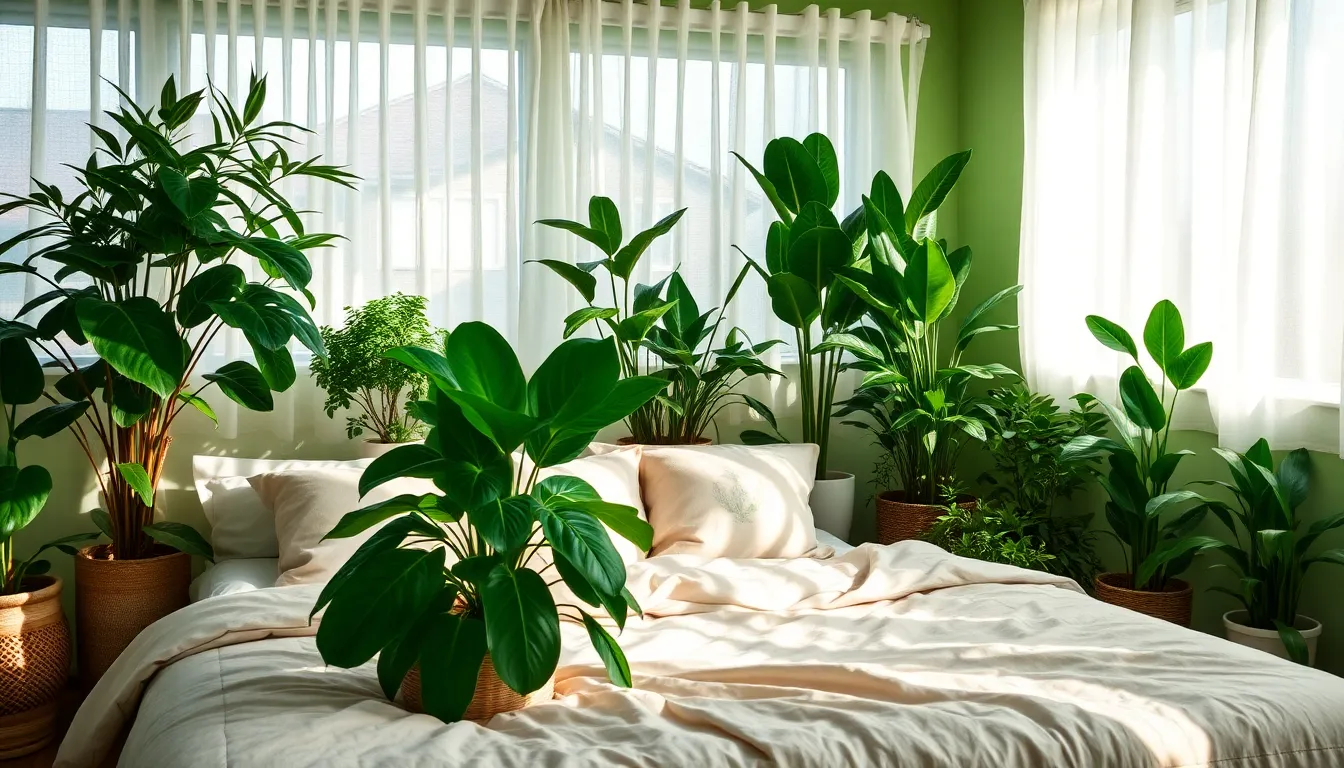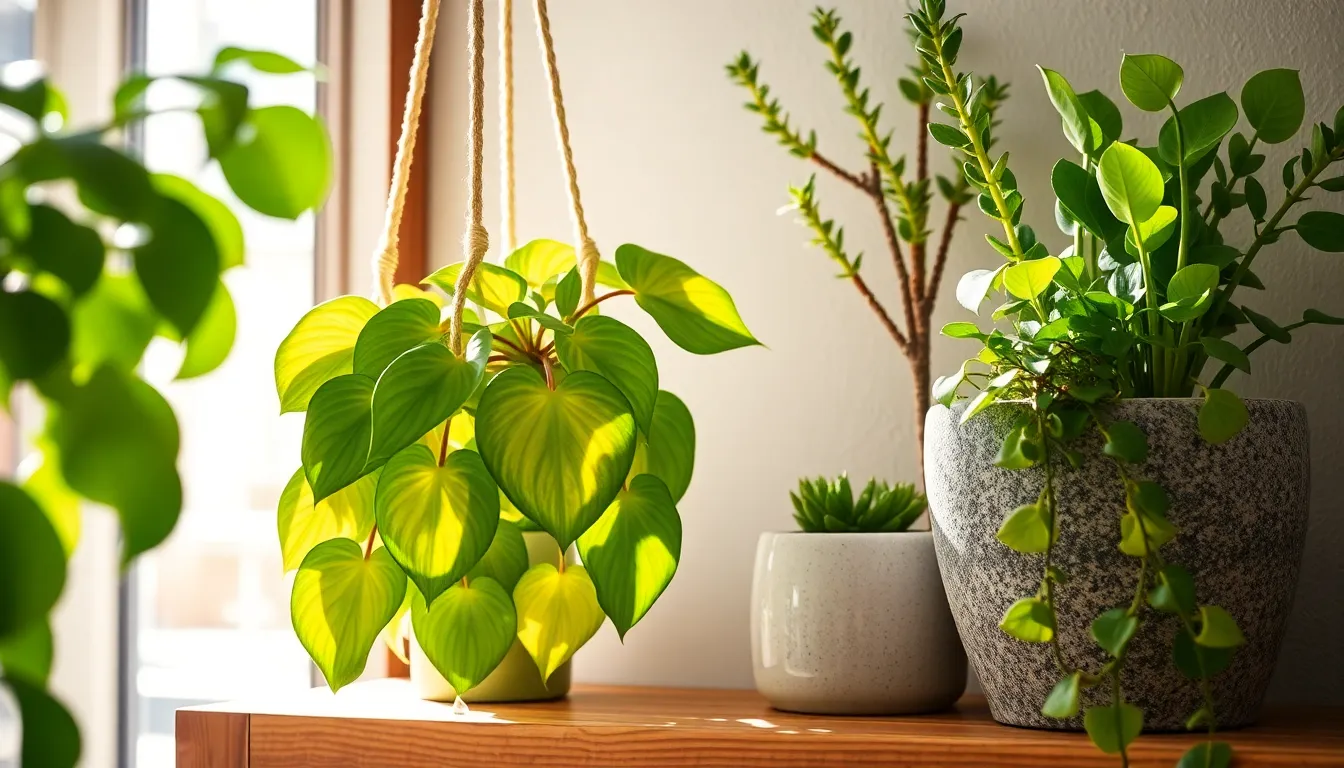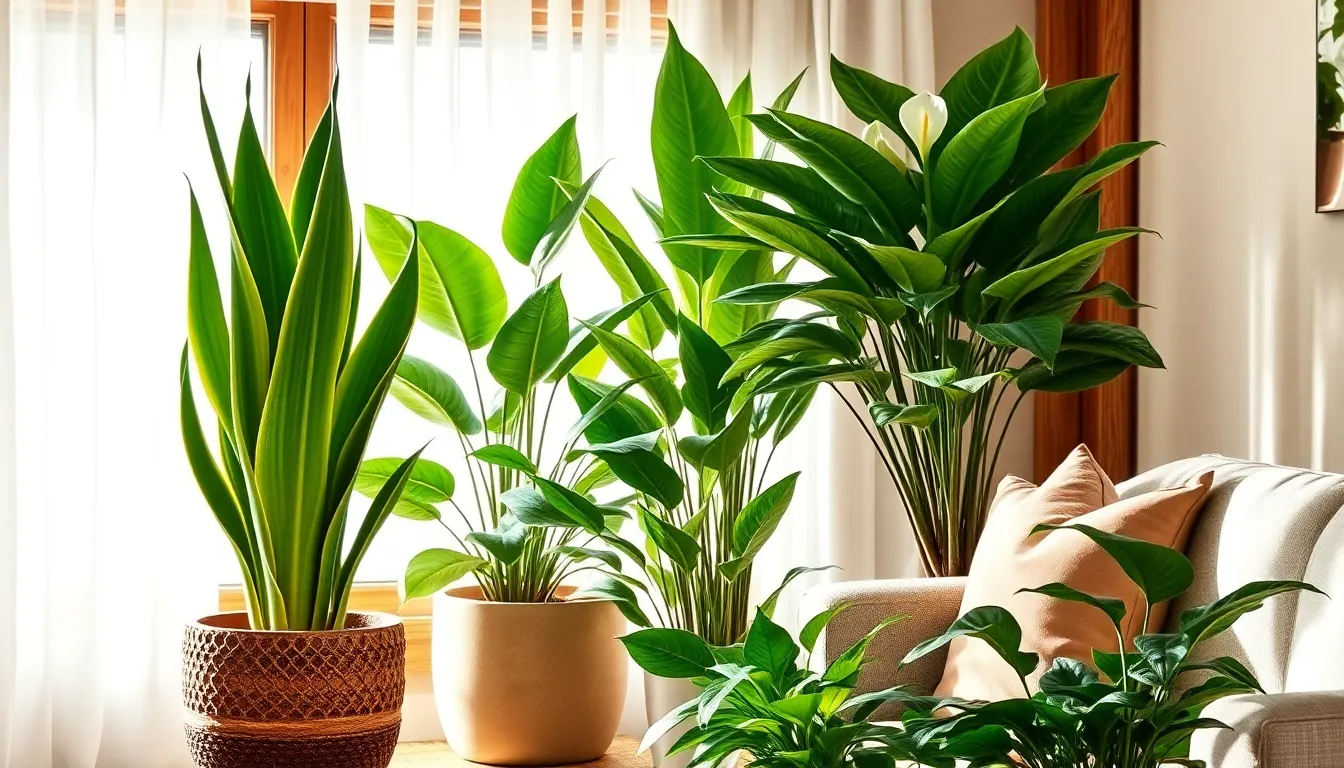Imagine transforming your home into a lush sanctuary where every breath feels like a revitalizing retreat. As you step into the world of houseplants, you’re not just adding beauty to your space—you’re inviting nature’s own air purifiers into your living room. Whether you’re just starting your gardening journey or you’ve got a green thumb proudly coated in soil, understanding the role of houseplants in improving indoor air quality can elevate your gardening practice to new heights.
The air we breathe indoors can often be more polluted than the air outside, thanks to everyday chemicals and pollutants. This is where houseplants step in, acting as natural filters that not only enhance the aesthetic appeal of your home but also contribute to a healthier living environment. In this article, we’ll explore ten stunning houseplants that excel at cleaning the air, offering you both beauty and function in one leafy package.
From the resilient snake plant to the graceful peace lily, these green companions are ready to weave their magic into your home. You’ll discover which plants are best suited for your space and lifestyle, as well as practical tips on how to care for them to ensure they thrive. So, get ready to deepen your connection with nature, improve your home’s air quality, and enjoy the myriad benefits these wonderful plants bring into your life.
Introduction to Air-Purifying Plants
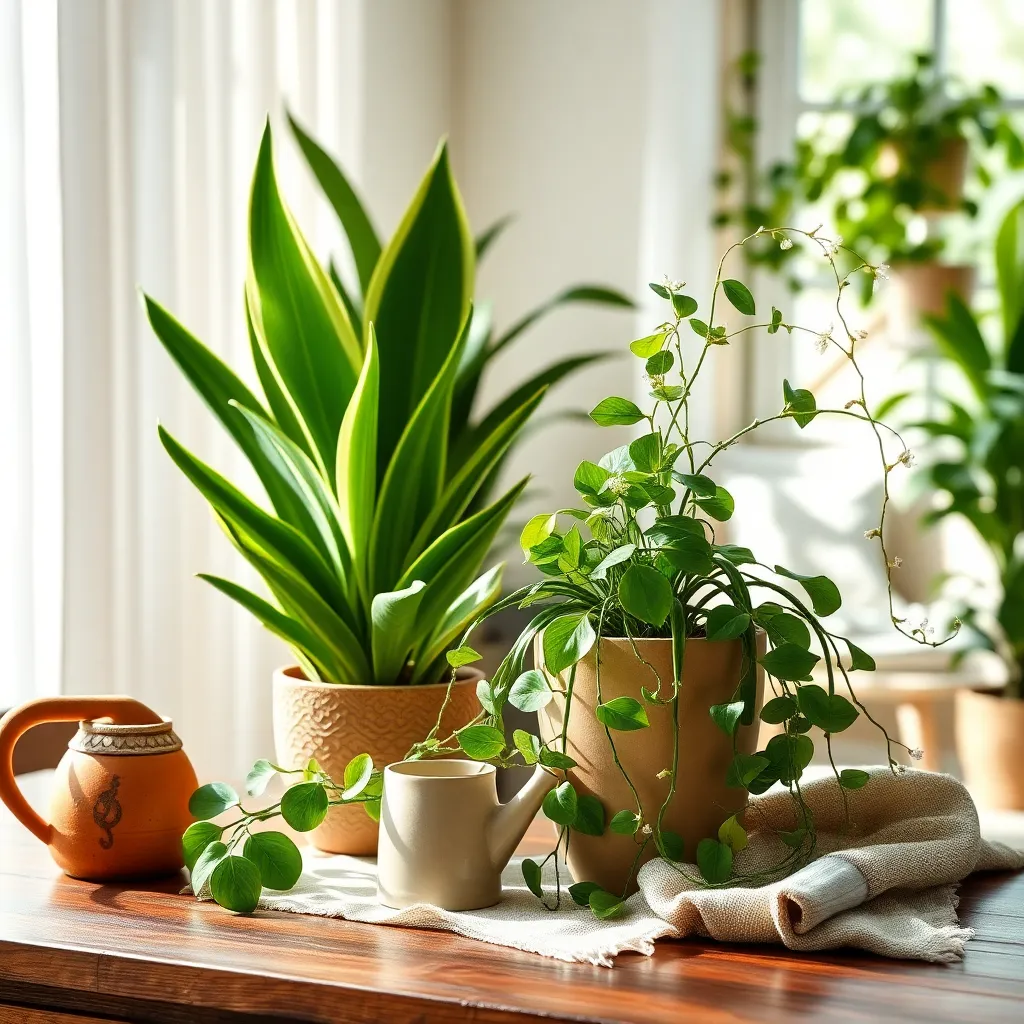
Air-purifying plants are not just aesthetically pleasing; they contribute to a healthier indoor environment by removing toxins. Understanding the basic care requirements of these plants can significantly enhance their air-cleaning abilities.
Begin with choosing the right species that fit your living conditions. For instance, the Spider Plant thrives in indirect sunlight and requires well-draining soil, making it perfect for beginners.
Proper watering is crucial for maintaining the health of air-purifying plants. Most of these plants prefer a consistent watering schedule, allowing the top inch of soil to dry out between waterings to prevent root rot.
For advanced gardeners, consider enhancing your plant’s air-purifying capabilities by grouping multiple plants together. This technique not only boosts their environmental benefits but also creates a lush, indoor oasis.
Peace Lily: Low-Maintenance Beauty
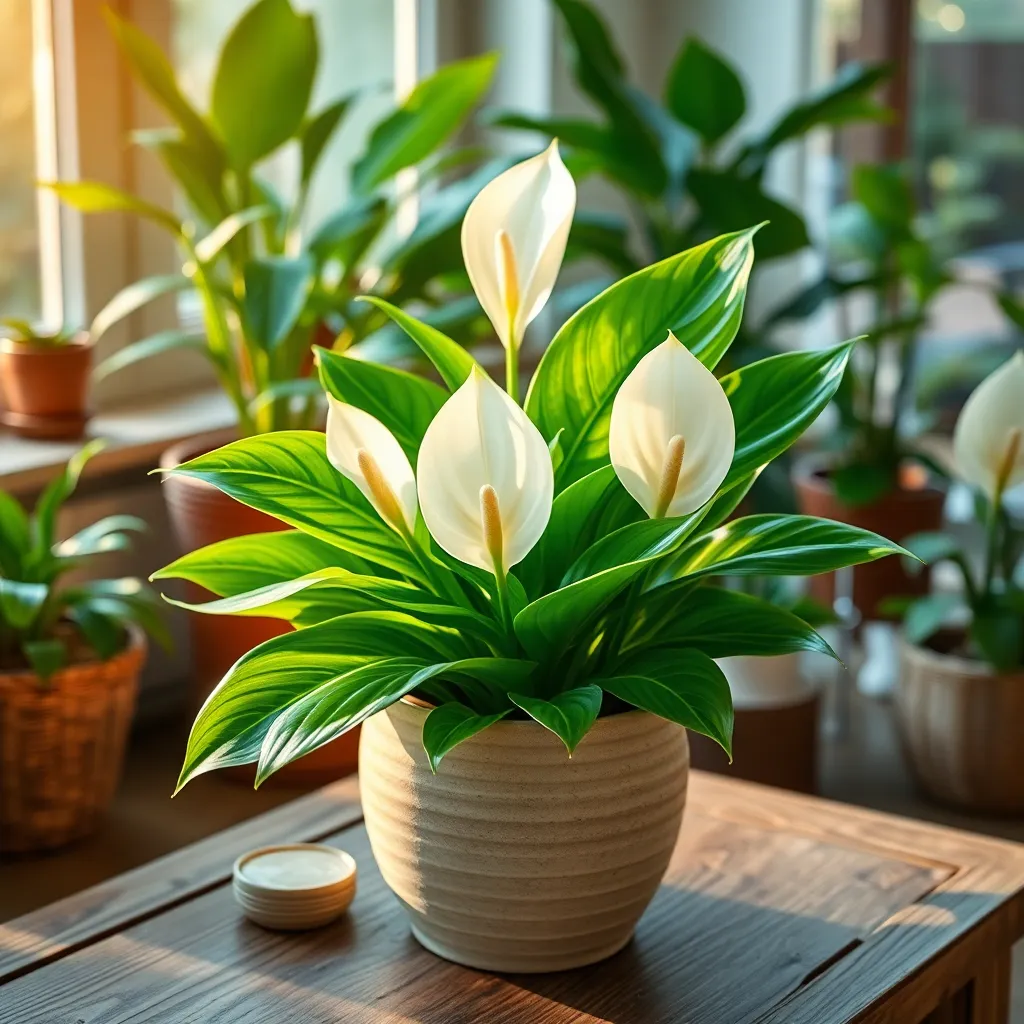
The Peace Lily is a wonderful choice for those seeking a low-maintenance plant that also purifies the air. Known for its broad, glossy leaves and elegant white blooms, this plant can thrive in various indoor conditions.
To keep your Peace Lily healthy, place it in a location with indirect, filtered light, as direct sunlight can scorch its leaves. If you’re uncertain about the light levels, a spot near a north or east-facing window usually works well.
Watering is crucial, but Peace Lilies are forgiving if you forget occasionally. It’s best to water them when the top inch of soil feels dry, ensuring you don’t let the plant sit in standing water, which could lead to root rot.
For optimal growth, use a well-draining potting mix comprised of peat moss, pine bark, and perlite. This combination helps retain the right amount of moisture while allowing excess water to drain away easily.
Fertilize your Peace Lily every six to eight weeks during the growing season with a balanced, water-soluble fertilizer. Avoid over-fertilizing, as too much can damage the plant’s roots and leaves.
Snake Plant: Nighttime Oxygen Booster
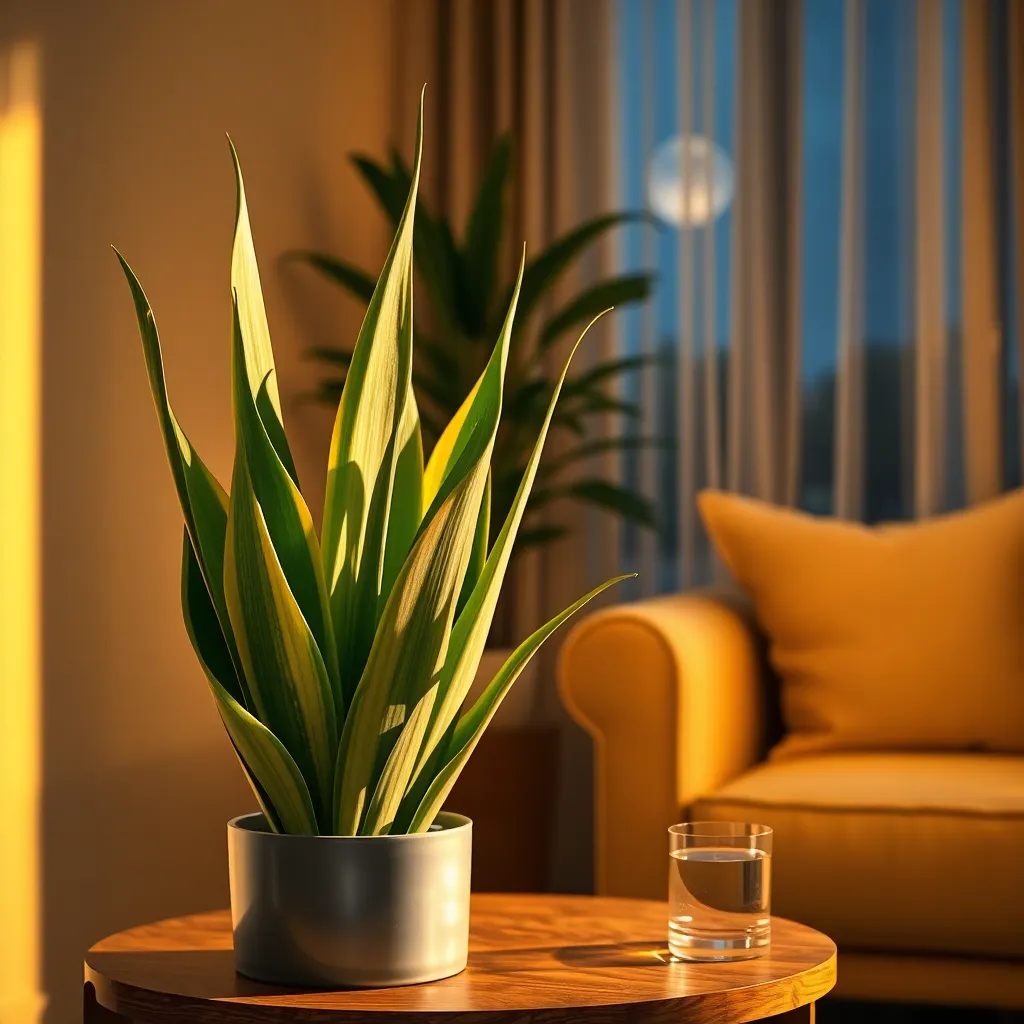
Known for its striking upright leaves, the Snake Plant is a hardy choice for any indoor garden. One of its standout features is its ability to produce oxygen at night, making it an excellent choice for bedrooms.
For beginners, this plant is forgiving and easy to care for, thriving in a variety of light conditions from low to bright indirect light. Make sure to plant it in well-draining soil like a cactus mix, and water it sparingly, allowing the soil to dry out completely between waterings.
Advanced gardeners might experiment with propagating the Snake Plant by dividing its rhizomes or using leaf cuttings. This plant is also known for its resilience, able to withstand neglect and still flourish, which makes it ideal for those with busy lifestyles.
Keep an eye on the temperature, as the Snake Plant prefers conditions between 60°F and 80°F. Ensure it is not exposed to cold drafts or extreme temperature fluctuations, which can cause leaf damage.
Spider Plant: Toxin-Busting Hero
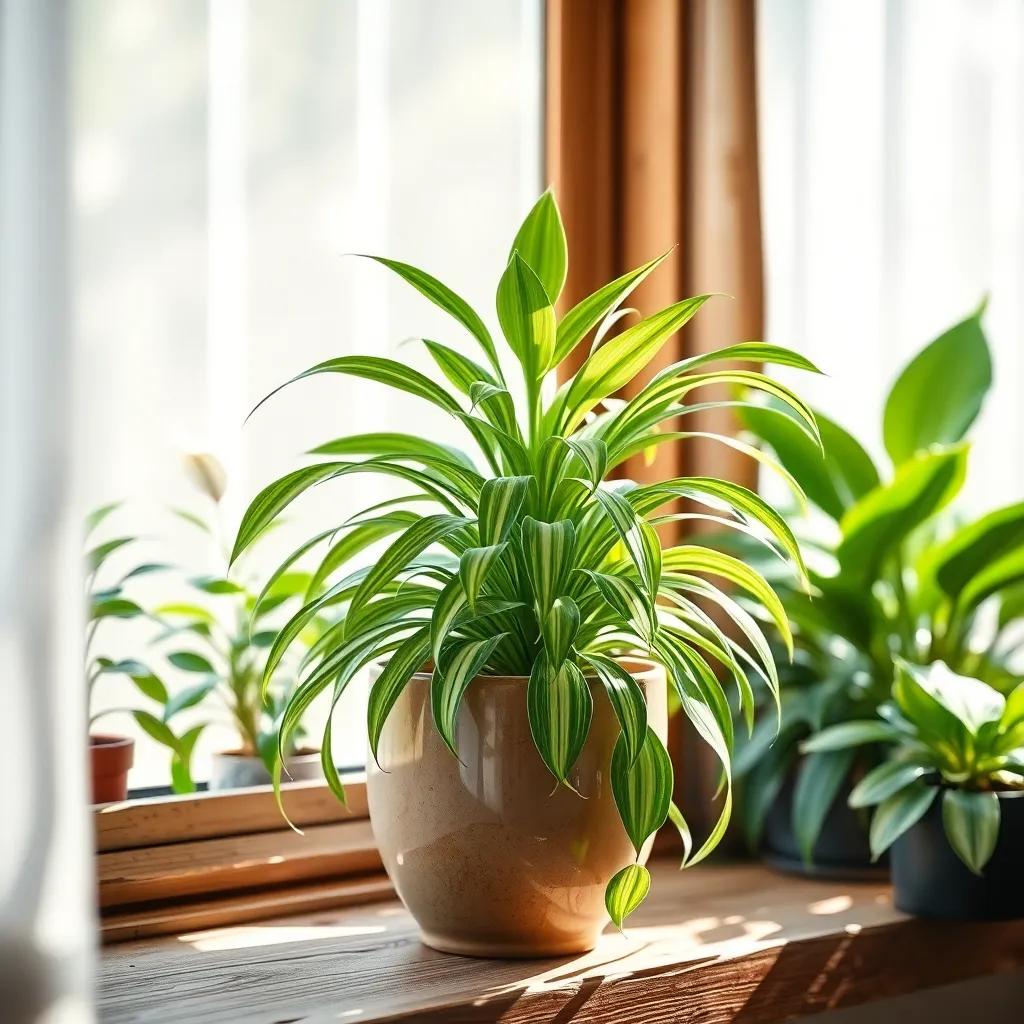
Spider plants, known for their lush green foliage and striking white stripes, are renowned for their ability to remove toxins like formaldehyde and xylene from the air. These plants are perfect for beginners because they thrive with minimal care and adapt well to a variety of indoor conditions.
To ensure your spider plant flourishes, place it in bright, indirect light, although it can tolerate low-light conditions as well. Water it moderately, allowing the soil to dry out between waterings to prevent root rot, which is a common issue for this plant.
Use a well-draining potting mix, such as a combination of peat, pine bark, and perlite, to promote healthy growth. For advanced gardeners, consider misting the leaves occasionally to maintain humidity levels, as spider plants prefer slightly humid environments.
Propagation is a breeze with the spider plant, making it a fun project for both novice and seasoned gardeners. Simply cut off one of the plantlets, or “spiderettes,” and place it in water until roots develop, then transfer it to soil.
Aloe Vera: Healing and Purifying
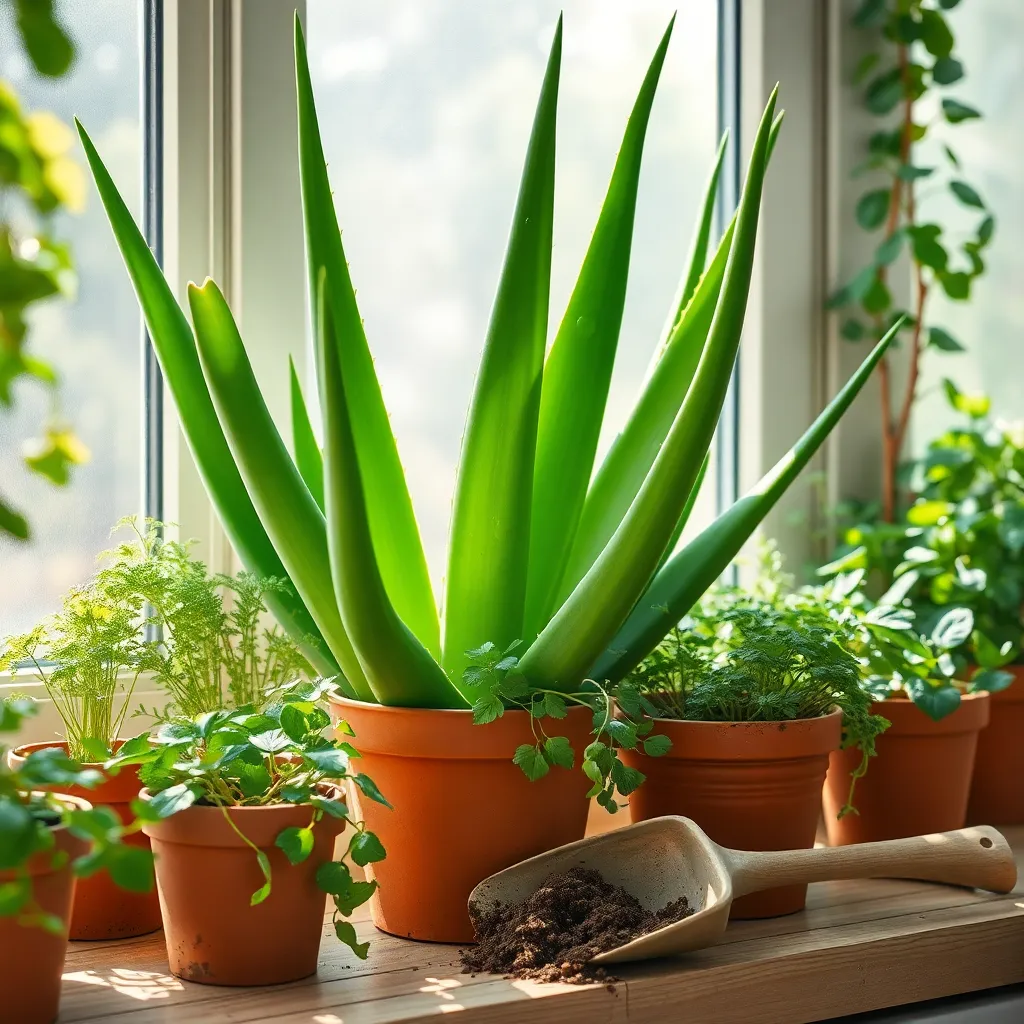
Aloe vera is not just a soothing remedy for burns; it’s also an excellent air purifier. This succulent is known for its ability to remove harmful chemicals like formaldehyde and benzene from the air, making it a great addition to any home.
For optimal growth, place your aloe vera in a sunny spot, such as a south or west-facing window. This plant thrives in temperatures between 55°F and 80°F, which makes it perfect for indoor environments.
To ensure your aloe vera stays healthy, plant it in a well-draining potting mix, such as a cactus or succulent blend. Water sparingly, letting the soil dry out completely between waterings to prevent root rot.
Advanced gardeners can propagate aloe vera by gently removing offshoots, or “pups,” and planting them in separate pots. With proper care, this resilient plant will not only enhance your home’s air quality but also provide a natural remedy for minor skin irritations.
Boston Fern: Humidity-Loving Cleaner
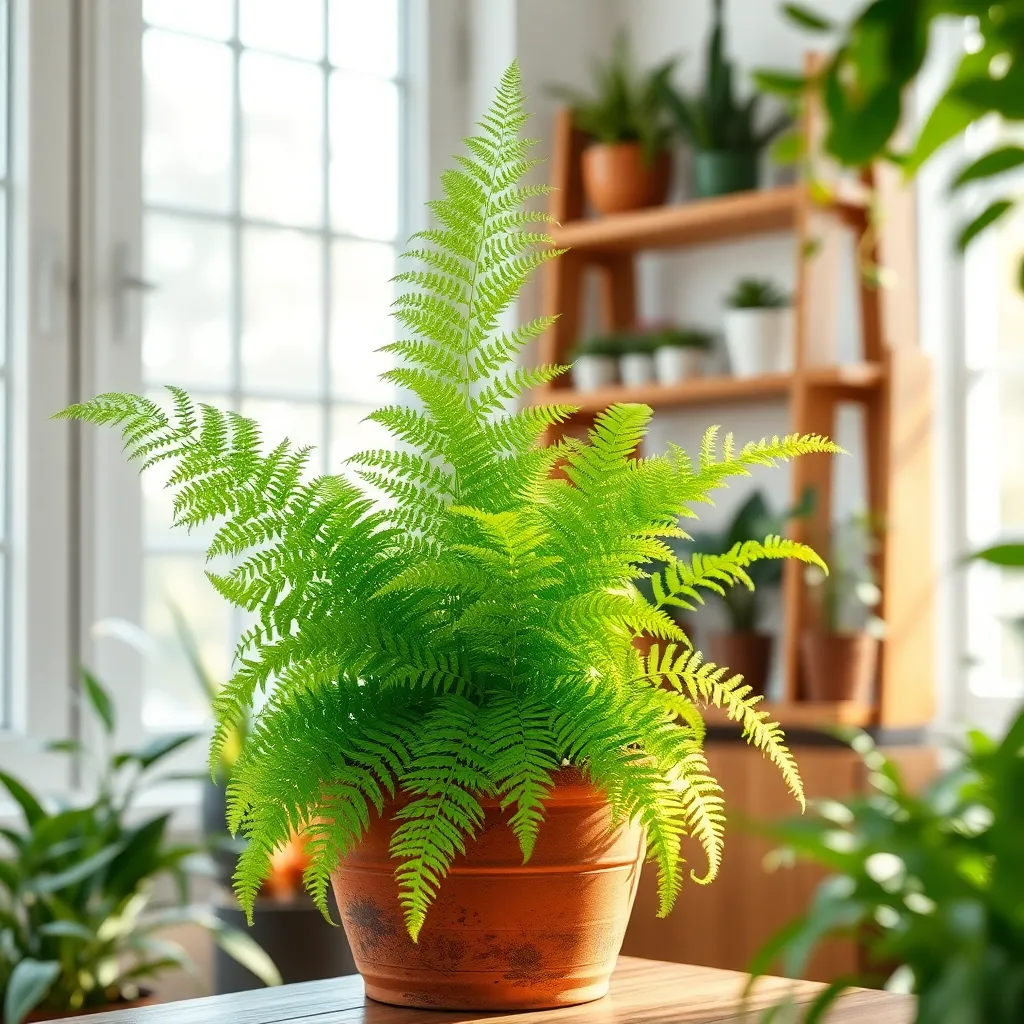
The Boston Fern is not only a lush addition to your home but also an effective air purifier. Known for its love of humidity, this plant thrives in environments where the air moisture is high, making it ideal for bathrooms or kitchens.
To keep your Boston Fern healthy, ensure it is planted in a rich potting mix that retains moisture but still drains well. Regular watering is key, aiming for the soil to be consistently damp but not waterlogged, which can lead to root rot.
Avoid placing it in direct sunlight, as its fronds can scorch easily; instead, opt for a location with indirect or filtered light. Misting the plant regularly can help it maintain the humidity levels it craves, especially during dry winter months.
For those seeking to elevate their plant care, consider investing in a humidifier to maintain the optimal humidity levels around your Boston Fern. Fertilize it lightly every month during the growing seasons of spring and summer with a balanced liquid fertilizer to encourage lush growth.
Rubber Plant: Stylish Toxin Fighter
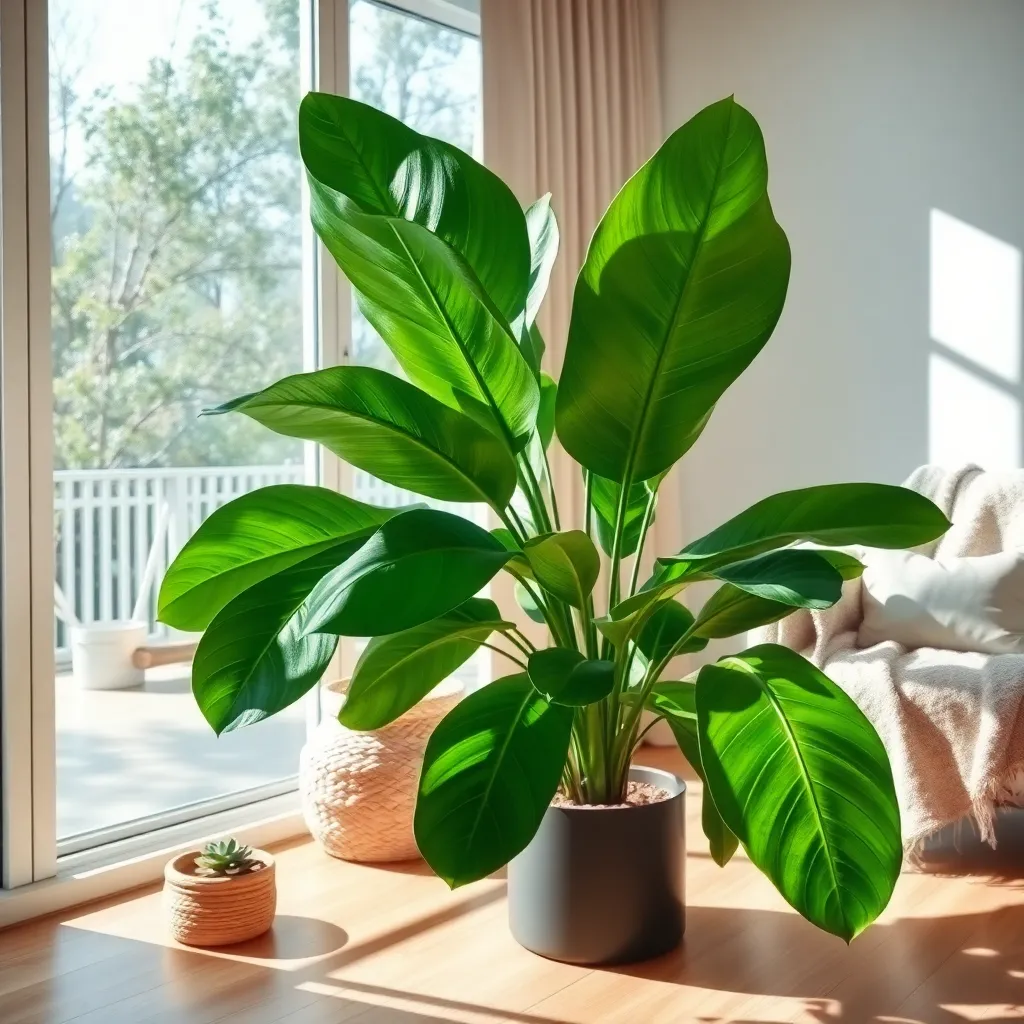
The Rubber Plant, scientifically known as Ficus elastica, is a stylish addition to any room while efficiently purifying the air. Known for its broad, glossy leaves, it excels at removing toxins like formaldehyde, making it a popular choice for health-conscious decorators.
To ensure your Rubber Plant thrives, place it in a spot with bright, indirect light. Direct sunlight can scorch its leaves, so consider positioning it near a window with filtered sunlight or behind a sheer curtain.
Water your Rubber Plant when the top inch of soil feels dry to the touch, typically every 1-2 weeks. Use a well-draining potting mix enriched with perlite or sand to prevent waterlogging, which can lead to root rot.
For more advanced care, consider misting the leaves occasionally to increase humidity, especially during dry winter months. Pruning is also essential to maintain its shape and promote bushier growth; simply snip off any leggy branches during the growing season.
Bamboo Palm: Tropical Air Freshener
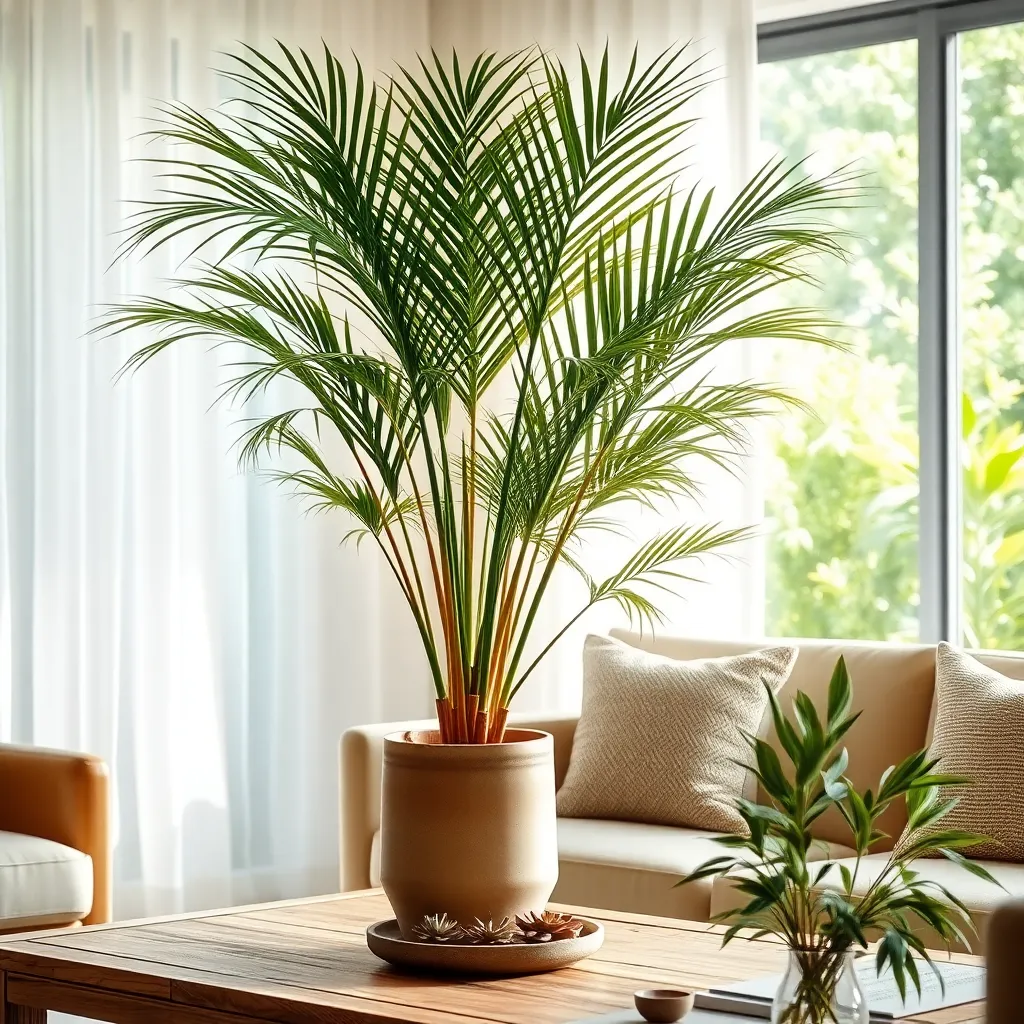
The Bamboo Palm, also known as Chamaedorea seifrizii, is a popular choice for those seeking a lush, tropical aesthetic in their homes. This plant is not only beautiful but also acts as a natural air purifier, effectively removing toxins such as formaldehyde and benzene from indoor environments.
For optimal growth, place your Bamboo Palm in a location that receives indirect sunlight, as direct sunlight can scorch its delicate fronds. It’s important to keep the soil consistently moist, but not waterlogged, to mimic its natural tropical habitat.
Beginner gardeners will appreciate that the Bamboo Palm is relatively low-maintenance, thriving in a well-draining potting mix with a peat-based soil. More experienced plant enthusiasts might consider misting the leaves regularly to maintain the high humidity levels that Bamboo Palms prefer.
To ensure your plant remains healthy and vibrant, feed it with a diluted liquid fertilizer every month during the growing season, typically spring and summer. Keep an eye out for pests such as spider mites, and wipe the leaves with a damp cloth to keep them clean and pest-free.
English Ivy: Versatile Air Cleaner
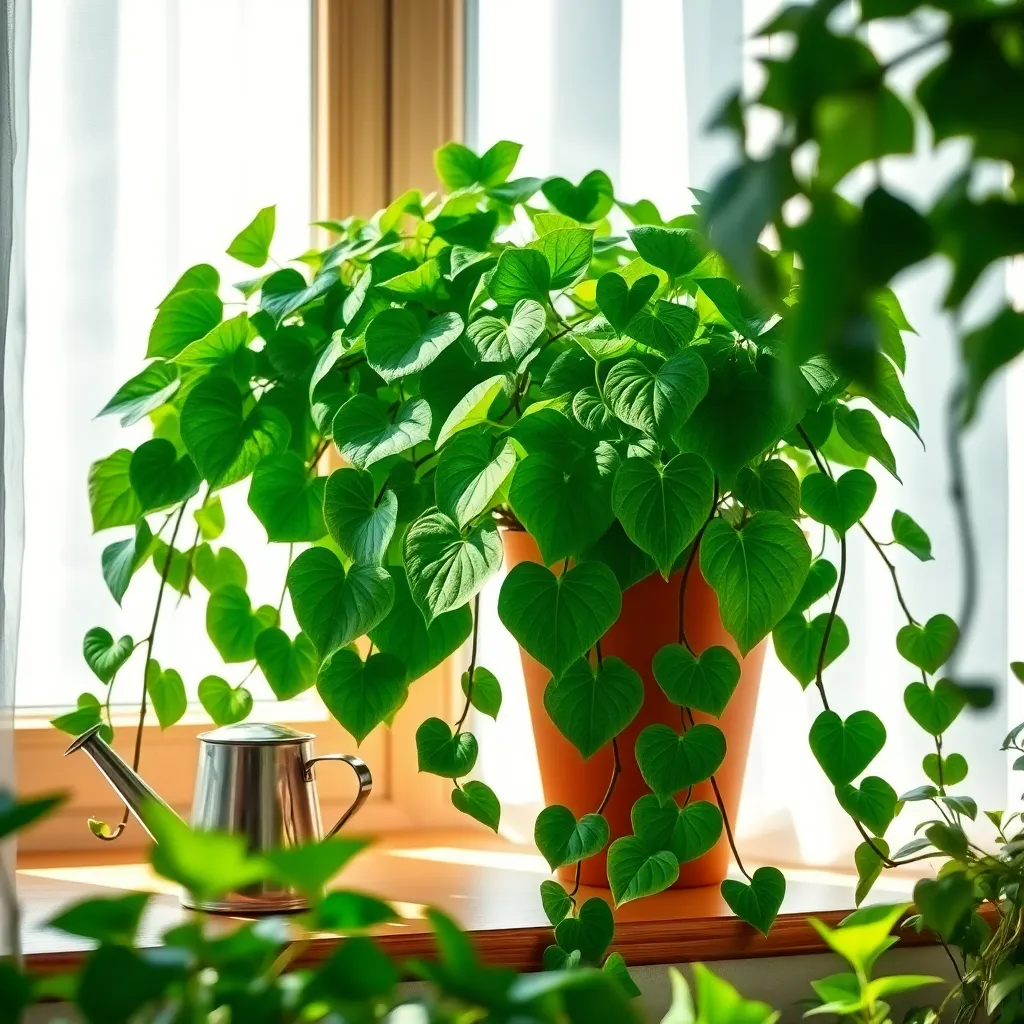
English Ivy is a classic choice for those looking to purify the air indoors, thanks to its remarkable ability to reduce mold and allergens. Its trailing vines can add a touch of elegance to any room, making it both a decorative and functional plant option.
To ensure your English Ivy thrives, place it in a spot with bright, indirect light, as direct sunlight can scorch its leaves. It’s important to keep the soil consistently moist during its growing season, but allow it to dry out slightly between waterings to prevent root rot.
For beginners, starting with a well-draining potting mix that contains perlite or sand can provide the ideal growing conditions. Advanced gardeners might consider pruning the vines regularly to encourage bushier growth, which can enhance its air-purifying capabilities.
Additionally, English Ivy can be grown in a variety of containers, from hanging baskets to floor pots, offering flexibility in how you display it. Remember to clean the leaves occasionally with a damp cloth to remove dust, which can block sunlight and reduce the plant’s ability to photosynthesize effectively.
Care Tips for Healthy Houseplants
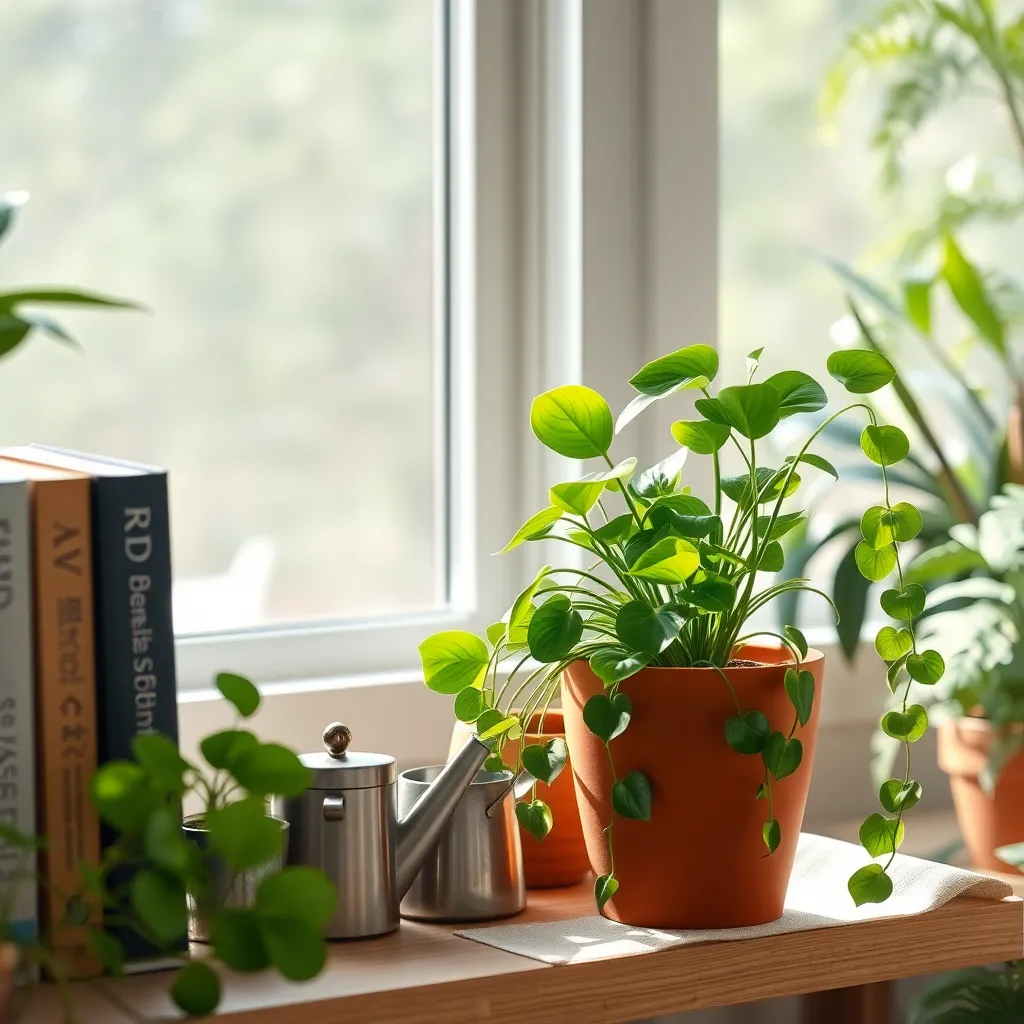
To keep your houseplants thriving, it’s essential to understand their specific needs for light, water, and nutrients. Begin by assessing the natural light in your home to match plants with their preferred lighting conditions, such as placing low-light lovers like snake plants in shaded areas.
Watering is a critical component of houseplant care, and learning to strike the right balance is key. Overwatering is a common mistake, so always check the soil moisture level by inserting your finger about an inch deep; if it’s dry, it’s time to water.
Using the right soil type can significantly impact your plants’ health. Choose a well-draining potting mix, especially for succulents and cacti, to prevent root rot and allow for proper air circulation.
Fertilizing your houseplants helps them grow and flourish, but it must be done judiciously. Use a balanced, water-soluble fertilizer every four to six weeks during the growing season, and reduce or stop feeding in the dormant winter months.
Advanced gardeners can explore techniques like repotting and pruning to maintain plant health and encourage new growth. Repotting every one to two years provides fresh nutrients and more space for roots, while regular pruning helps manage plant size and shape.
Consistency is crucial for houseplant care, so establish a routine for monitoring their needs. By paying attention to changes in your plants’ appearance, such as yellowing leaves or stunted growth, you can quickly adjust care practices to keep them healthy.
Conclusion: Growing Success with These Plants
In exploring the beauty and benefits of houseplants, we’ve uncovered ten key insights that can enrich your relationship with both nature and loved ones. From fostering a nurturing environment with the Peace Lily to cultivating resilience through the adaptable Snake Plant, each plant symbolizes a unique aspect of relationship growth. Just like the Spider Plant’s ability to thrive in varied conditions, relationships flourish through adaptability and understanding. The English Ivy teaches us the importance of cleansing negativity, while the Boston Fern highlights the value of maintaining a comfortable atmosphere. Mutual care is mirrored by the Aloe Vera, and the Bamboo Palm reminds us of the strength found in flexibility. The Gerbera Daisy inspires us to brighten our surroundings, and the Weeping Fig demonstrates the importance of patience. Lastly, the Chrysanthemum encourages us to celebrate transformations.
Now, take immediate action by choosing one plant to introduce into your home, symbolizing your commitment to nurturing your relationships. Save this article to revisit these insights and continue your journey of growth. Remember, every step you take brings you closer to a thriving, harmonious relationship ecosystem. Bookmark this guide as your companion in cultivating a future filled with love and connection.

